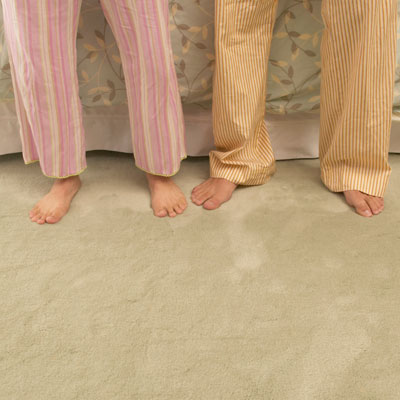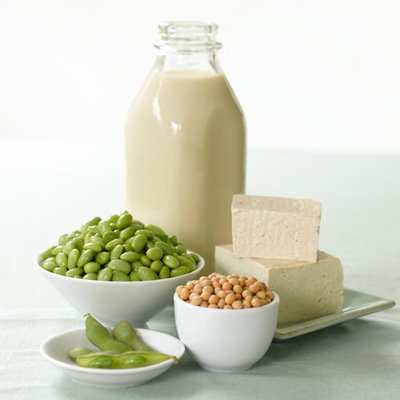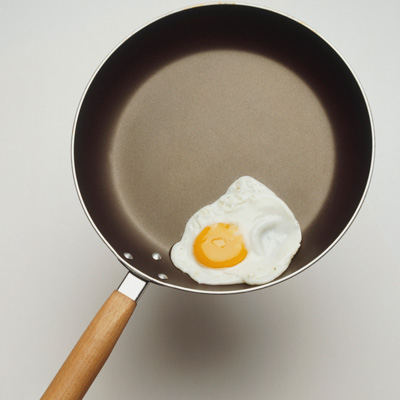5 Ways Your Home Can Make You Infertile
Toxins in your couch, vinyl floor, and other spots where you may have made attempts to expand your family could be throwing a wrench in your reproductive works. As much as we like to see home as a benevolent vessel of our dreams, the materials and chemicals they're made of and furnished with—from flame-retardant cushions to Teflon pans—can quash those dreams. Here's 5 culprits to look for, and what you can do about them. For all 15 ways your home can make you infertile, check out thisoldhouse.com
-
1. Solvents: Handle With Care

The chemical conveyors found in paints, varnishes, thinners, stains, resins, rubbers, lubricants, dyes, detergents, insulation, inks, films, cosmetics, cleaning products, spot removers, fingernail polish, and many other places can disrupt a woman's normal menstrual cycle or cause a miscarriage, and in men they can hamper semen quality. Bottom line: Don't use them more than you have to. If you haven't heard us say it before, buy no- or low-VOC paint and look for products certified by the Greenguard Environmental Institute. Source: "Environmental Factors in Infertility," Clinical Obstetrics and Gynecology (December 2000). MORE: Home Inspection Nightmares
-
2. Carpets and Couches: Be Careful Where You Shag

Flame retardants are in the cushions of our couches and car seats, in carpet padding, and in the casings of many electronic devices (mattresses rely on a physical barrier to fend off flames). The chemicals can damage sperm, and in a recent study, women with high levels of flame-retardant compounds known as polybrominated diphenyl ethers (PBDE) in their blood took longer to get pregnant than women with lower levels—up to 50 percent longer in cases of high levels. The two most commonly used PBDEs were actually banned in 2004, but they're still in our homes. Women should avoid areas where carpet is being removed, and it might be best not to reupholster your own furniture if you're trying to conceive. And when you buy new furniture, avoid anything with a tag that states "complies with California Technical Bulletin 117," the law requiring furniture to be flame retardant. Or look for furniture made of alternative nontreated materials, such as cotton, wool, and latex. Source: "PBDE Concentrations in Women's Serum and Fecundability," Environmental Health Perspectives (May 2010). MORE: 10 Uses for Carpet Scraps
-
3. Flexible Plastics: Not So Fantastic

You'd have to be a monk to completely escape contact with phthalates, the molecular secret sauce that makes PVC and other plastics flexible. Though these plasticizers are being phased out of many products, they're present in every room of the house in the form of nail polish, vinyl shower curtains, vinyl floor tiles, adhesives, building materials, plastic, caulk, and, ironically enough, sex toys. Turns out phthalates are also conspicuously present in men with low sperm counts and sperm with damaged DNA; in women, some scientists suspect they're linked to endometriosis, a condition that disrupts the menstrual cycle and can interfere with conception. We ingest phthalates from dairy products, absorb them through the skin, and breathe them in as aging plastic off-gasses them into our cozy homes. What to do? Avoid buying products made with soft PVC, use glass instead of plastic in the microwave, and use glass or stainless steel for hot food and drinks (many aluminum drinking bottles have an imperceptible BPA lining). And, we're sorry to say, don't roll around in the buff on your vinyl floor. Source: "The relationship between environmental exposures to phthalates and DNA damage in human sperm using the neutral comet assay," Environmental Health Perspectives (July 2003). MORE: Top DIY Injuries
-
4. Soy: Doesn't Bring Joy

The jury is still out on the health effects of soy and its attendant endocrine-bending isoflavones; some experts point to its association with decreased prostate cancer and others toward its link to decreased fertility in animal studies. Well, you may want to think twice before stocking the fridge with soy milk. Some evidence suggests that at high levels the plant-based estrogens in soy can disrupt the ovarian cycle. And according to a Harvard study of 99 men from an infertility clinic, those who knocked back the most soy products also had the lowest sperm count: 41 million sperm per milliliter fewer than men who didn't consume soy. That's one-half to one-third of the normal sperm count (80 to 120 million sperm per milliliter). Source: "Soy food and isoflavone intake in relation to semen quality parameters among men from an infertility clinic," Human Reproduction (November 2008). MORE: Dealing With Household Disasters
-
5. Teflon Pans: Don't Stick With Nonstick

You know that trusty old Teflon skillet you break out for Sunday pancakes? Unlike newer versions, its non-stick coating contains perfluorinated compounds, which have been linked to reproductive problems. Women having trouble getting pregnant are more likely to have high levels of perfluorinated compounds in their blood compared with women who get pregnant the first month they try. And if the women with higher levels do get pregnant, their babies are less likely to meet important development milestones. These compounds were also used in the lining of microwave popcorn bags and products such as Scotchgard. Although manufacturers have been using different formulations for the past few years, perfluorinated compounds don't break down--they're still everywhere, from carpets to couches, so be careful where you sit. Source: "Maternal Levels of Perfluorinated Chemicals and Subfecundity,"Human Reproduction (January 2009). MORE: Cleaning Up Lead, Asbestos, and Other Hazards
Become a Community Contributor.

